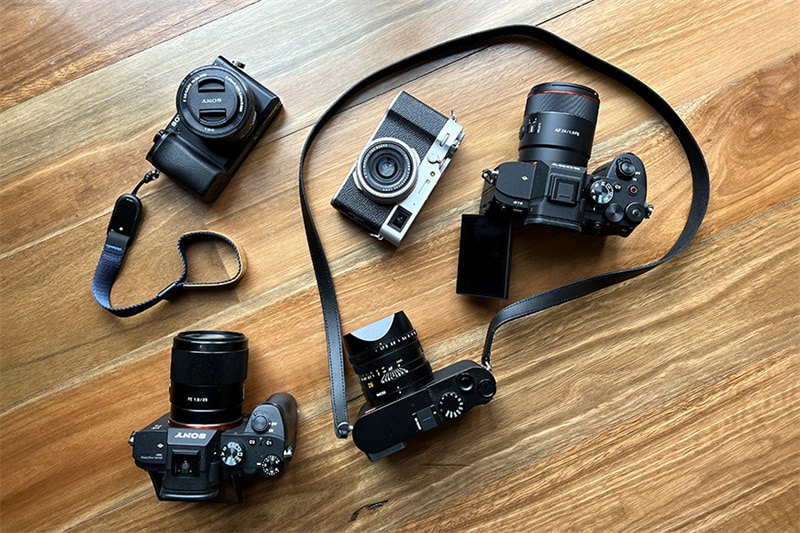
As technology continues to develop, it has become increasingly clear that the future of photography will be shaped by innovative advances in technology.
Digital cameras, image editing software, and other technological advancements have already had a huge impact on photography today, allowing us to take sharper images from further away or capture otherwise impossible angles. But with even greater advances in AI-driven image analysis and sensor technologies being developed, the advancement of digital imaging is just getting started.
This post will explore how these developments are transforming photographers’ workflows—from researching scenes to shooting locations—and providing new potential for developing stunning imagery and moving storytelling.
Introducing the Latest Camera Technologies for Professional Photographers

For professional photographers, having the latest camera technologies is not just a luxury, it's a necessity to stay ahead in the competitive photography industry. The latest camera technologies offer improved autofocus, faster shooting speeds, higher resolution, and better performance in low-light situations. With these advancements, professional photographers can now capture stunning images with greater ease and precision.
The new cameras also come with advanced features such as built-in Wi-Fi, GPS, and Bluetooth connectivity, making it easier than ever to transfer and share images. If you're a professional photographer looking to take your craft to the next level, investing in the latest camera technologies is definitely worth considering.
How Luts Have Changed Photography
LUTs, short for Look-Up Tables, have revolutionized the field of photography in a profound way. Previously confined to the realm of films and video post-production, LUTs are now increasingly utilized in photography to achieve highly versatile and visually stunning effects. They act as a mathematical formula, transforming color and tone to create a specific aesthetic. This makes it possible to replicate film stocks, create vintage looks, or even mimic the color grading of certain movies.
For photographers who desire to streamline their workflow and maintain consistency in their visual storytelling, incorporating color grading presets into their post-processing routine has become a popular and efficient method. With the aid of LUTs, photographers can achieve a level of consistency and uniqueness in their work that was once a cumbersome process.
As LUTs become more prevalent, they continue to push the boundaries of photographic creativity, contributing significantly to the evolution of photographic artistry.
Analyzing the Impact of Virtual Reality on Photography
Virtual reality has been a game changer in many industries, including photography. With the ability to create immersive and interactive experiences through VR, photographers are able to capture and share their work with a whole new level of engagement. However, the impact of virtual reality on photography goes beyond just visual storytelling. Automation has also played a significant role in streamlining photo editing and post-processing.
By using algorithms and artificial intelligence, software like Adobe Photoshop and Lightroom can now automate repetitive tasks such as cropping and color correction, ultimately freeing up photographers' time to focus on the creative side of their work. As technology continues to advance, the possibilities of virtual reality and automation in photography are both exciting and endless.
Examining the Role of Automation in Streamlining Photo Editing
Automation in photo editing has emerged as a pivotal aspect of modern photography. It has been instrumental in reducing tedious manual work, allowing photographers to concentrate more on the creative aspect of their profession. Automated software tools can perform a multitude of tasks ranging from simple corrections such as red-eye removal or straightening to complex ones like changing backgrounds or removing unwanted objects.
Furthermore, artificial intelligence is now being incorporated into these tools to understand user preferences and make smart suggestions for edits, enhancing the overall editing experience and saving valuable time for photographers.
Exploring Different Types of Cameras and Lenses to Capture Stunning Shots
The world of photography can be both magical and overwhelming at the same time. With the advancement of technology, there is a vast array of cameras and lenses available in the market, each designed to cater to different needs. Are you a budding photographer looking to capture stunning landscape shots? Or an avid traveler seeking the best portable camera to document your adventures?
Whatever your requirements may be, exploring the different types of cameras and lenses can help you take your photography skills to the next level. From the versatility of a mirrorless camera to the sharpness of prime lenses, the possibilities are endless. So go ahead, pick up a camera, and start exploring the world through your lens!
Investigating New Technology Developments for Amateur Photographers

In today's world, photography has become highly accessible with the rise of technology. From smartphones to DSLRs, taking pictures has never been easier for amateurs. Nonetheless, with the constant advancements in technology, it's vital to stay up-to-date with the latest developments as an amateur photographer. Investigating new technology is essential as it can enhance one's craft and capture stunning photos like never before.
For instance, the introduction of mirrorless cameras has changed the game for many photographers, offering them portability, better image quality, and versatility. Learning about such advancements and investing in new equipment can significantly enhance one's photography skills and open up new opportunities in the field. So don't be afraid to embrace new technology and see how it can elevate your photography journey!
Overall, the continuous evolution of technology in the photography industry has significantly impacted the way we capture and share images. From advanced cameras to new software tools, these innovations have made photography more accessible, efficient, and creative than ever before.
The landscape of photography has been vastly transformed with the arrival of new technologies and tools. Advanced cameras, innovative software, and the incorporation of elements like LUTs, Virtual Reality, and automation have all contributed to reshaping the photography industry. These technological advancements have not only made photography more accessible to the masses but have also equipped photographers with the means to push creative boundaries and redefine artistic expression.
As we move forward, these innovations are expected to continue to evolve and unlock new possibilities in the world of photography, making it an exciting time to be engaged in this dynamic field.










